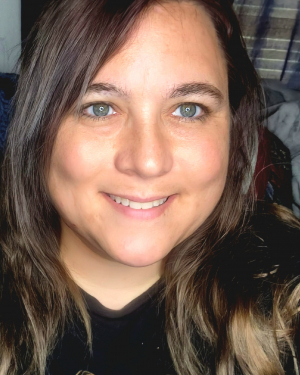The perspectives and opinions articulated in this article are solely those of the author and do not represent the views or endorsements of Adoption.com. Adoption.com is committed to supporting legal, Hague Accredited adoption processes that prioritize the well-being of all individuals involved. Additionally, Adoption.com recognizes the significance of challenging stereotypes surrounding adoptees and emphasizes the importance of providing access to mental health resources. If you or your family require assistance or are in a situation where safety is a concern, we encourage you to reach out to appropriate, accredited support systems for guidance and support.
This story has been circulating in the news for several years now. However, documentaries have come out more recently to sensationalize an already truly bizarre and sad story. Some background is necessary to understand how weird it all is and how it relates (if at all) to the adoption community at large.
In 2009, a horror movie was released about a family that adopts a little girl from Russia; It was called Orphan. (Immediately, I was not a fan of the title because orphans typically get poor representation in the media already.) Spoilers ahead. The movie is based very loosely on this news story from 2007 where a 34-year-old woman pretended to be a 13-year-old boy. It’s as strange as it sounds.
In 2010, a couple adopted a little girl through an odd, high-pressure, second-chance adoption situation. Natalia was supposedly 6 at the time. As can be the case with international adoptions, there was a chance she was a little bit older.
Natalia was a traumatized little girl who acted out and began to show signs of highly disturbing behavior. Do I doubt this child had problems and probably said horrifying things? No. I don’t struggle to believe this girl was behaving in worrying ways. However, in the documentary, in the first 5 or so minutes the adoptive mom says, “It’s so weird, have you ever seen the movie Orphan? It’s just like the movie Orphan.” From my perspective, it felt like an odd proposition.
After several incidences, Natalia ends up in a mental health institution. While she is there, in a move no one saw coming, the adoptive family, the Barnettes, go to a judge to petition Natalia’s age to be changed from 7 to 22. When Natalia is released from the mental health hospital, she is moved into a one-bedroom apartment all by herself. Which, if she was actually 22 isn’t a big deal. However, Natalia was 7. Or, at the very least, that is what the majority of the people involved in the case now believe. However, due to the Barnettes having her age changed, it was perfectly legal.
Natalia would go into her neighbor’s houses uninvited, and hide on the porch until they came home from work just to have someone to talk to. Most of the neighbors had been informed that Natalia was a mentally ill 22-year-old. So they thought this behavior was really strange and probably dangerous. In addition to skulking around, Natalia was always dirty, smelled bad, looked unwell, and was generally seen as a nuisance. After a year, the residents asked the apartment manager to not renew her lease.
Natalia’s absentee adoptive parents found her another apartment in a bad part of town and then moved to Canada. While they were there, Natalia was taken in by another family who saw her for the neglected child she was. They went to the police to try and have her adoptive parents charged with neglect. However, the age parents are no longer responsible for children with special needs is 22 (Natalia is a little person with a rare form of dwarfism that makes her life difficult and painful at times).
Nevertheless, police pursue a case. The adoptive dad was found not guilty. The adoptive mom’s charges were dropped due to insufficient evidence.
Once she was older, Natalia’s new caretakers went with her to the Dr. Phil show to share her side of the story. As one might guess, the stories are quite different. Now Natalia seems to be living her best life on her own as an adult after having spent her teen years with a loving family that understood her needs.
This case caught my attention because so many of the things the Barnettes said Natalia did were things that happened to us with a child in our care. However, I was struck by how novel all this behavior seemed to a couple who had supposedly done their due diligence in trying to adopt.
It seems to me (as a non-professional armchair psychologist), that the Barnettes were, like so many hopeful adoptive parents, imagining how their love would save a little girl. They weren’t the first family to take her in. She had been through upwards of 30 different homes. She needed extensive surgery so she wouldn’t have pain when she walked.
The circumstances surrounding her adoption are so strange to me, and it feels as if things were rushed. The “adoption agency” only gave them a few hours after meeting Natalia to decide if they wanted to adopt her or they’d send her to foster care. I think most people, when faced with the choice between taking the sweet-looking little girl in versus letting her go into foster care, would take the little girl with us.
Despite the intentions, Natalia’s life has been harmed forever because of the abuses she suffered both before and after entering the Barnette’s home. Maybe Natalia wasn’t as young as the adoption agency made it seem that she was, but she was almost certainly a small child that needed care and protection.
I’ve listened to a truly unhinged number of podcasts on this topic while I go about my day I was struck by how many people just took it on faith that Natalia was an adult when she was still just a child. I think more judges need to be well-versed in childhood trauma so they can understand when things go sideways. Adopted kids can struggle in ways that are unfamiliar to people outside the adoption community. However, Natalia exhibited some behaviors that are basically attachment disorder 101; so, I questioned how no one saw her behavior and thought “Oh this is a traumatized little girl, not a psychopathic woman.” Nevertheless, I intend to go over the documentaries and news articles again so I can try and wrap my head around this bizarre situation.

